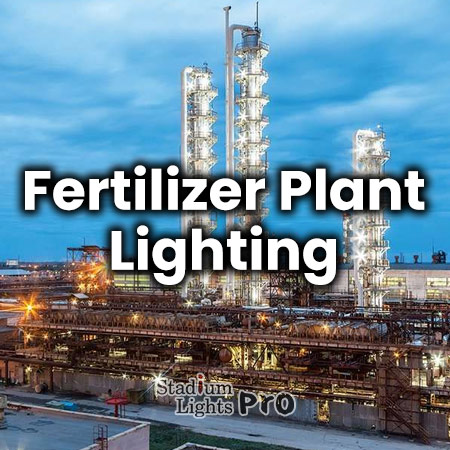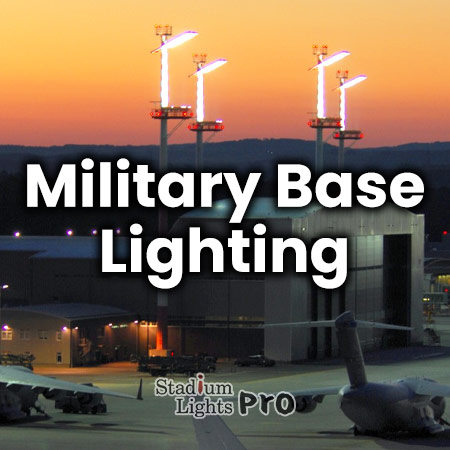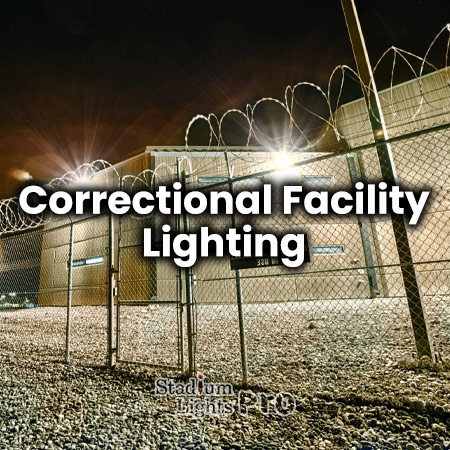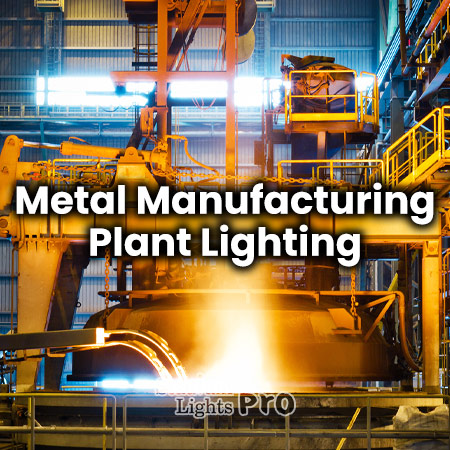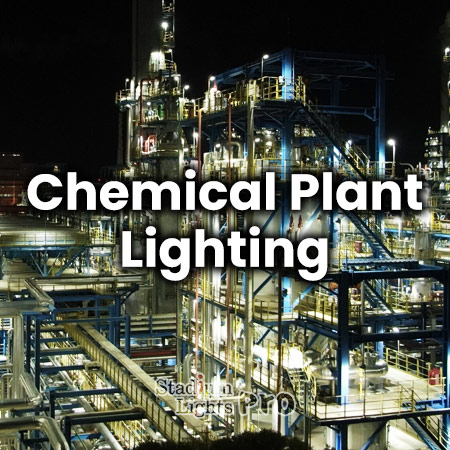Fertilizer production is a critical component of modern agriculture, ensuring that crops receive the nutrients they need for optimal growth. One often overlooked aspect of fertilizer production is the lighting system used within the plant. Proper lighting design is essential to ensure not only the safety and productivity of the workforce but also the quality and efficiency of fertilizer production.
What lights are used in fertilizer plants?
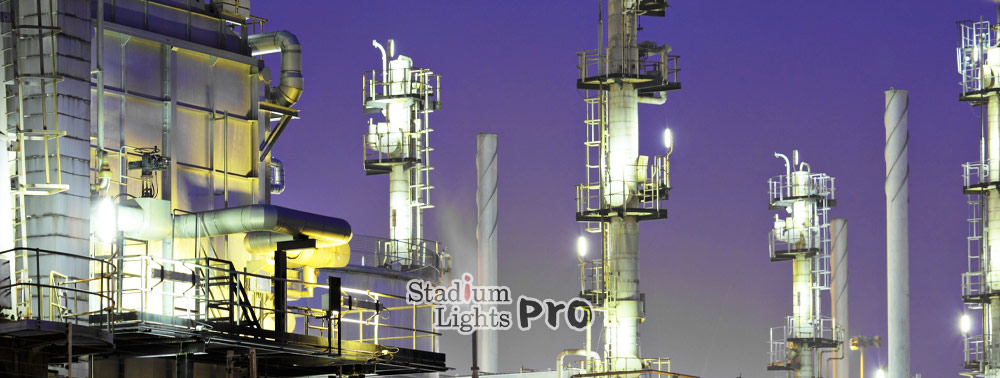
Fertilizer plants require various types of specialized lighting fixtures to ensure safety and functionality in their unique and often challenging environments. Here are some common types of lights used in fertilizer plants, each designed to meet specific requirements.
Explosion-proof lights
Fertilizer plants often have areas where the presence of explosive gases or dust is a concern. Explosion-proof lights are designed to prevent the ignition of flammable substances in these hazardous locations. They are typically constructed with rugged enclosures and sealed components to contain any potential explosions within the fixture, ensuring safety.
Heat-resistant lights
Some areas of a fertilizer plant may be exposed to high temperatures, such as those near kilns or furnaces. Heat-resistant lights are designed to withstand these extreme heat conditions without compromising their performance or safety. They often feature special heat-resistant materials and coatings.
Corrosion-resistant lights
Fertilizer production involves exposure to corrosive chemicals and moisture. Corrosion-resistant lighting fixtures are built to endure these harsh conditions. Materials such as stainless steel, aluminum, and non-corrosive plastics are commonly used to construct these fixtures.
Dust-proof and water-resistant lights
Many areas in a fertilizer plant can accumulate dust and moisture, potentially affecting the performance of lighting fixtures. Dust-proof and water-resistant lights are sealed to prevent the ingress of dust, dirt, and moisture, ensuring their reliability in these environments.
Vibration-resistant lights
In certain areas where heavy machinery and equipment are in operation, vibrations can be a concern. Vibration-resistant lights are designed to withstand constant shaking and ensure stable illumination without flickering or damage.
LED lights
LED (Light Emitting Diode) lights have become increasingly popular in fertilizer plants due to their energy efficiency, long lifespan, and durability. LED fixtures can be designed to meet various requirements, including explosion-proof, heat-resistant, and corrosion-resistant options.
Emergency lighting
In case of power outages or other emergencies, fertilizer plants require reliable emergency lighting systems to guide personnel safely out of the facility. These systems often include battery-backed LED emergency lights and exit signs.
Task lighting
Task-specific lighting fixtures are used in laboratories, quality control areas, and workstations where precise and focused lighting is required. These fixtures can be adjustable and equipped with high-CRI LEDs to ensure accurate color rendering for quality control tasks.
Outdoor lighting
Outdoor areas in and around fertilizer plants may require lighting for safety and security purposes. These fixtures must be designed to withstand environmental conditions, including exposure to weather, dust, and potential vandalism.
Lighting design for fertilizer plants

The primary purpose of lighting in a fertilizer plant is to provide a safe and efficient working environment. However, it also plays a role in supporting quality control processes and ensuring accurate measurements. Moreover, it can have a subtle but vital impact on the overall well-being of workers, helping to reduce fatigue and stress.
Lighting levels (Lux)
Lighting levels, as measured in lux (lumens per square meter), are a fundamental consideration in the design of lighting systems within a fertilizer plant. These levels vary depending on the specific tasks and areas within the facility. Adequate lighting is not only essential for the safety and well-being of employees but also for the efficiency and accuracy of various plant operations. Here’s a detailed breakdown of the recommended lighting levels in different areas of a fertilizer plant.
Warehouses and storage areas (150-300 lux)
In warehouses and storage areas of a fertilizer plant, lighting should provide a sufficient level of visibility for employees to safely move materials, conduct inventory checks, and locate stored items. While these areas may not require extremely high lighting levels, maintaining a minimum of 150 lux ensures that workers can perform their tasks effectively and safely. However, for more detailed tasks within these spaces, such as inspecting the condition of stored materials, lighting levels of up to 300 lux may be necessary.
Production and processing areas (300-750 lux)
Production and processing areas are typically the heart of a fertilizer plant where various chemical reactions and processes take place. These areas often involve machinery operation, equipment monitoring, and product inspection. To facilitate these tasks and ensure the accuracy of processes, higher lighting levels ranging from 300 to 750 lux are recommended. The specific lighting level within this range depends on the complexity of the tasks and the need for precision in monitoring and quality control.
Laboratories and quality control areas (750-1000 lux)
Laboratories and quality control areas demand the highest lighting levels within the fertilizer plant. Accurate color recognition and precise measurements are essential in these spaces, where chemical analyses and quality assessments are conducted. To enable scientists and technicians to perform their tasks with confidence and precision, lighting levels ranging from 750 to 1000 lux are recommended. The high illumination ensures accurate color rendering and supports meticulous analysis and experimentation.
Outdoor Areas (adequate illumination for safety)
Outdoor areas within a fertilizer plant, such as walkways, parking lots, and loading docks, require lighting primarily for safety and security purposes. The level of outdoor lighting should be sufficient to prevent accidents, deter unauthorized access, and ensure clear visibility during nighttime or low-light conditions. The precise lux levels for outdoor areas may vary based on local safety regulations and the specific requirements of the plant’s outdoor spaces.
Uniformity
Achieving uniform lighting within a fertilizer plant is of paramount importance for several compelling reasons. Uniform lighting refers to the even distribution of light across all areas of the facility, leaving no room for shadows or dark spots. This uniformity plays a vital role in ensuring the safety and efficiency of plant operations.
First and foremost, uniform lighting is a critical component of safety. In a fertilizer plant, employees are often engaged in various tasks that require precision and attention to detail. Shadows or dark areas can create visual obstructions, making it difficult for workers to accurately assess their surroundings. This, in turn, can lead to accidents, mishaps, or even near misses. By providing consistent illumination throughout the facility, uniform lighting helps reduce the risk of these incidents, promoting a safer work environment.
Moreover, uniform lighting is essential for maintaining quality control and ensuring accurate measurements. In areas where quality assessments are conducted or where precise measurements are required, variations in lighting levels can introduce errors or inconsistencies. For instance, in a laboratory setting within the plant, where the color of fertilizers or other materials may need to be analyzed, uniform lighting is crucial for accurate results. Inconsistent lighting can distort colors and affect the quality assessment process.
To achieve this uniformity, it’s essential to strategically plan the placement of lighting fixtures and design the layout thoughtfully. This involves considering factors such as fixture spacing, mounting heights, and angles. By strategically positioning fixtures, designers can minimize the potential for overlapping or excessive brightness in some areas while leaving others inadequately lit. A well-designed lighting layout takes into account the specific needs and tasks performed in each area of the fertilizer plant, ensuring that light is distributed evenly where it matters most.
Color Rendering Index (CRI)
The Color Rendering Index is a metric that quantifies how accurately a light source can reproduce colors in comparison to natural sunlight (which has a CRI of 100). A high CRI value indicates that the light source closely matches the true colors of objects under its illumination. In settings where precise color recognition is vital, such as quality control or laboratory spaces within a fertilizer plant, a CRI of 90 or above is recommended.
Quality control
Quality control processes in a fertilizer plant often involve visually inspecting raw materials, intermediate products, and final products. Accurate color representation is crucial for identifying any deviations or impurities that might affect product quality. For instance, changes in color can be indicative of variations in chemical composition, which could impact the effectiveness of the fertilizer. High-CRI lighting helps inspectors make more reliable judgments and ensures that product quality meets industry standards.
Laboratory analysis
In laboratory spaces, precise color recognition is fundamental for conducting accurate chemical analyses and experiments. Fertilizer composition, chemical reactions, and the presence of impurities can all be influenced by color changes. Laboratories may perform tests to assess the color stability of fertilizer products over time, and high-CRI lighting ensures that these tests yield trustworthy results.
Product consistency
Fertilizer manufacturers often strive for consistency in their products, and color can be an essential parameter for assessing this uniformity. High-CRI lighting allows for the detection of even minor variations in color, helping manufacturers maintain consistent product quality and ensuring that their customers receive fertilizer products with the expected characteristics.
Special considerations
Hazardous areas
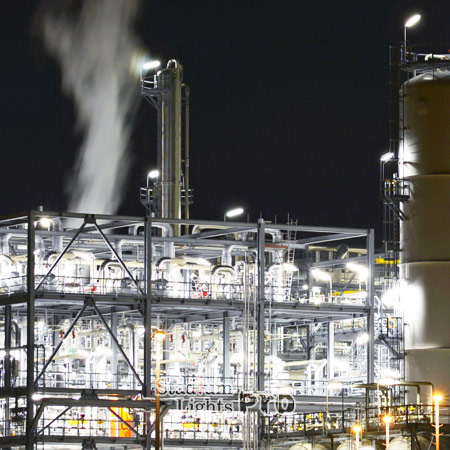 Fertilizer plants often contain areas that pose significant safety risks due to the presence of explosive dust or gas. In such hazardous environments, ensuring that lighting fixtures meet specific safety standards is paramount to prevent the risk of ignition and potentially catastrophic accidents. Two primary types of fixtures are commonly used in these areas.
Fertilizer plants often contain areas that pose significant safety risks due to the presence of explosive dust or gas. In such hazardous environments, ensuring that lighting fixtures meet specific safety standards is paramount to prevent the risk of ignition and potentially catastrophic accidents. Two primary types of fixtures are commonly used in these areas.
Explosion-proof fixtures
These fixtures are designed with robust enclosures and sealed components to contain any potential explosions within the fixture itself. This design prevents sparks or arcs from escaping and igniting flammable substances in the environment.
Intrinsically safe fixtures
Intrinsically safe lighting fixtures are designed to operate in hazardous atmospheres by limiting the electrical energy to a level that cannot ignite explosive gases or dust. They are considered a safer option for areas with extreme risks.
Durability
Fertilizer production environments are characterized by their harsh conditions, including exposure to chemicals, moisture, and dust. In such challenging settings, lighting fixtures must be exceptionally durable and resistant to corrosion to withstand these harsh elements. LED (Light Emitting Diode) fixtures have become increasingly popular choices due to their remarkable durability. They are constructed using materials and coatings that can withstand corrosive agents and environmental factors.
Energy efficiency
Fertilizer plants are under increasing pressure to reduce operational costs and minimize their environmental impact. Therefore, opting for energy-efficient lighting solutions is essential. LED lighting stands out as an energy-efficient choice. LED fixtures consume significantly less electricity than traditional lighting technologies, leading to reduced energy costs and lower carbon emissions. Furthermore, LED lighting offers the advantage of dimming capabilities, allowing for dynamic adjustments of light levels based on the specific task or time of day. This flexibility not only enhances energy savings but also contributes to a more comfortable and efficient work environment.
Maintenance
Ensuring that lighting fixtures are easy to maintain is crucial for maintaining continuous plant operations. Frequent maintenance interruptions can disrupt workflow and lead to downtime. Lighting fixtures should be readily accessible and designed for quick replacement when needed. LED fixtures are preferred in this regard due to their extended lifespan, which translates to less frequent replacement and reduced maintenance requirements. This results in cost savings over time and minimizes disruptions in the plant’s operations, contributing to improved overall efficiency.
How much does it cost to light a fertilizer plant?
The cost of lighting for a fertilizer plant can indeed vary widely based on a range of factors. Below is a broad range of potential costs with approximate figures and a brief explanation of what each cost encompasses.
Lighting design and consultation
- Low end: $5,000 to $10,000
- High end: $20,000 to $50,000+
The cost of designing the lighting system can vary based on the complexity of the plant, the number of lighting zones, and the level of customization required. Higher-end costs may include more extensive design work and consulting services.
Lighting fixtures
- Low end: $10,000 to $30,000
- High end: $50,000 to $100,000+
The cost of lighting fixtures depends on the type and quantity needed. Basic fixtures may have lower upfront costs, while specialized fixtures, such as explosion-proof or heat-resistant lights, can be more expensive. LED fixtures, which are energy-efficient, can also have varying costs based on their quality and features.
Labor and installation
- Low end: $10,000 to $20,000
- High end: $50,000 to $100,000+
Labor costs for installation depend on factors such as the size of the facility, the complexity of the wiring, the number of fixtures, and the local labor rates. More extensive installations or projects in remote areas may incur higher labor costs.
Electrical infrastructure
- Low end: $5,000 to $10,000
- High end: $20,000 to $50,000+
Upgrading or modifying the electrical infrastructure to support the new lighting system can range from relatively simple and low-cost changes to more extensive and costly upgrades, such as panel upgrades or rewiring.
Maintenance and replacement
- Annual maintenance: 1-5% of the initial installation cost
- Fixture replacement: Variable, based on fixture lifespan
Ongoing maintenance costs typically include cleaning, bulb or fixture replacement, and electrical system checks. The annual maintenance cost is usually a percentage of the initial installation cost.
Emergency lighting
- Low end: $2,000 to $5,000
- High end: $10,000 to $20,000
The cost of emergency lighting systems can vary based on the size of the facility and the complexity of the design. These systems are essential for safety and compliance.
Conclusion
In a fertilizer plant, proper lighting design is a vital aspect of safety, productivity, and quality control. Meeting lighting requirements in terms of lux levels, uniformity, and color rendering is essential to create a conducive working environment. Special considerations, such as hazardous areas and durability, must also be factored in. Ultimately, investing in a well-designed lighting system not only improves the overall functionality of the plant but also contributes to the well-being of the workforce and the efficiency of fertilizer production.
Contact us today for a complimentary lighting design consultation tailored to your fertilizer plant’s specific needs. Our expert team is here to help you achieve optimal lighting solutions that meet safety requirements and enhance productivity. Don’t hesitate to get in touch; we’re committed to illuminating your fertilizer plant’s success.

